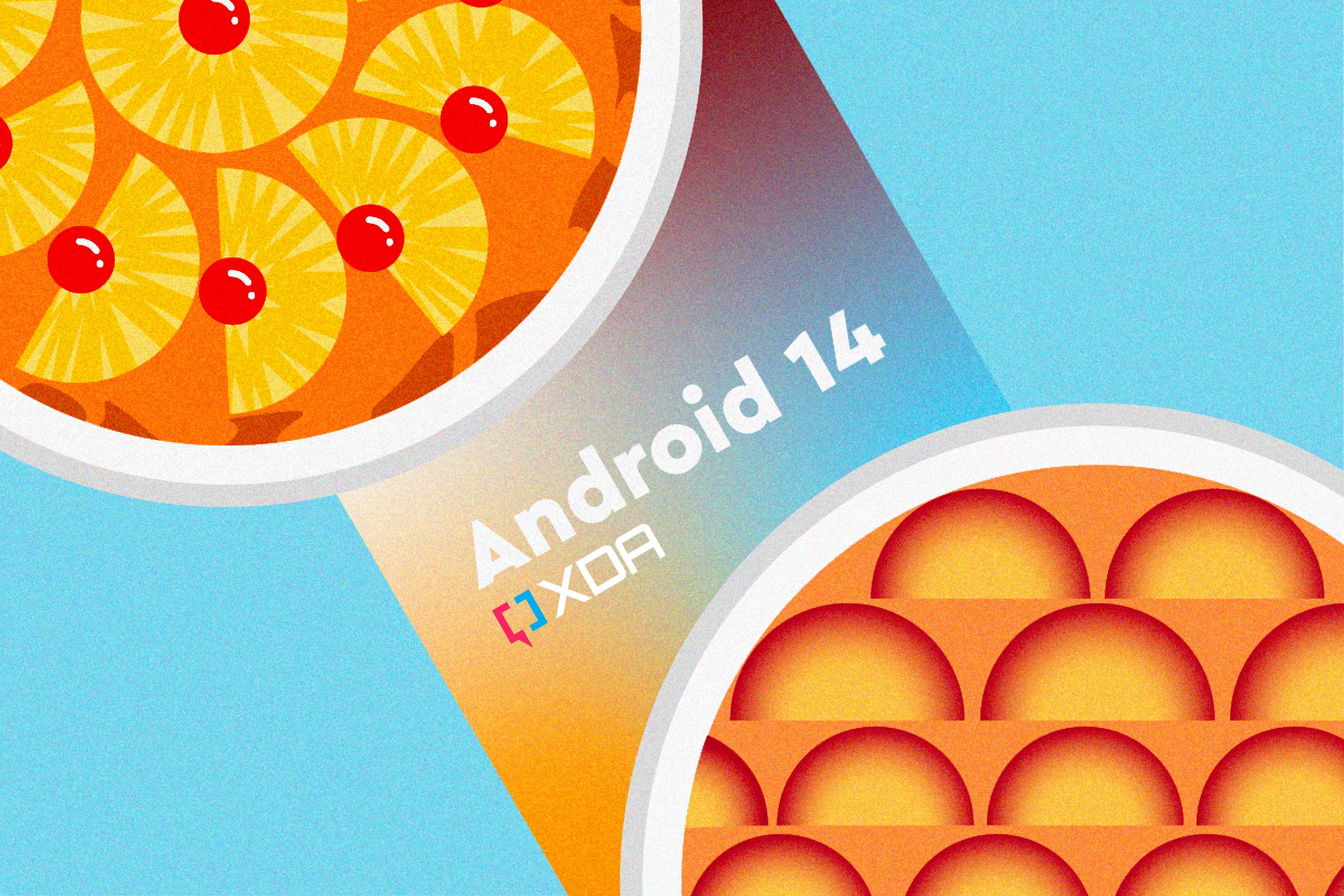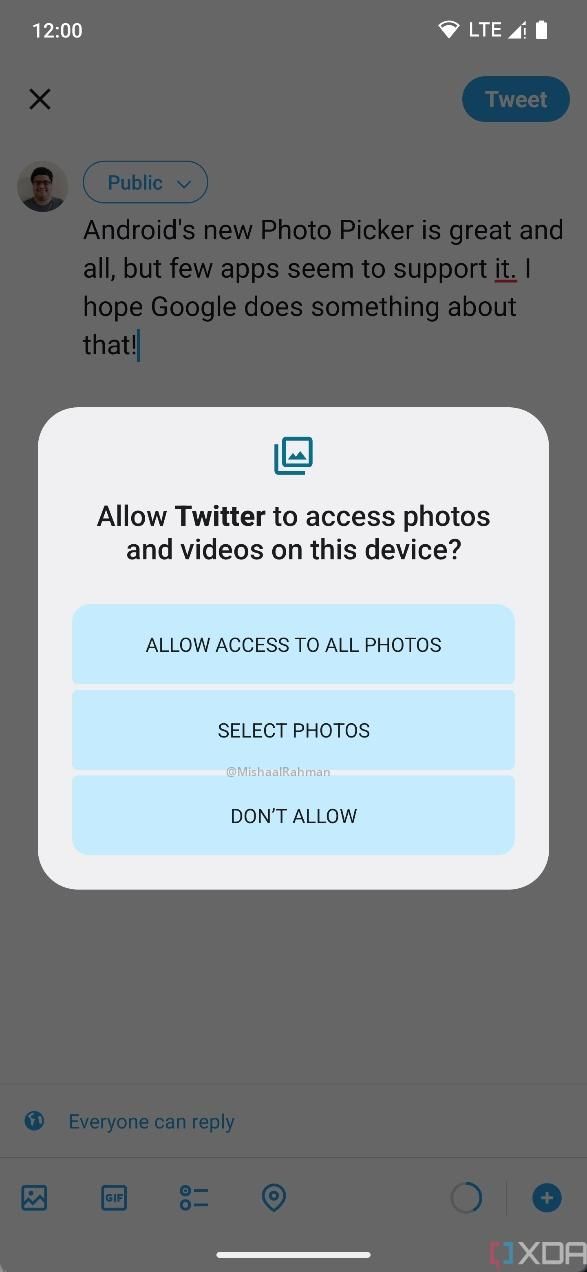The first developer preview of Android 14 dropped last month, and it packed all of the groundwork for the next iteration of the world's largest operating system. The first developer preview had customization options and better battery life promises, and the second developer preview doubles down on some of those changes. As well, it also introduces new ways to protect your security and privacy, such as by allowing you to select what photos an app can access on your device.
As the title "Developer Preview" implies, these releases are intended for usage by developers only. It's for testing out new features and making sure that their apps work on updated devices as they're supposed to. There are going to be bugs, there are going to be other problems, and Google will be pushing for feedback from developers over the coming months. If you don't mind running into problems, then by all means, give Android 14 a try. However, if you rely on your smartphone being consistently stable, then it might be worth waiting for the full Android 14 release that's expected to launch in the latter half of the year.
The most notable features of Android 14 developer preview 2 include:
- Giving users more control over their data: Changes have been introduced so that users can select what specific photos an app accesses on the device, so that you don't need to share your entire photo library with an app. A screenshot detection API has also been added to prevent unnecessary access to a user's data.
- More, safer ways to sign in: A new API offers a secure password-less sign-in via passkeys for logging into apps.
- Improvements to Android device system health: Android 14 will aim to streamline how apps run, including preventing them from running while they are frozen so as to save on battery life and performance.
We expect there are other under-the-hood changes too, which we'll be keeping an eye out for.
When will Android 14 release?
For Android updates, Google typically reveals a "platform stability" milestone so that developers can know when Google intends on delivering the final SDK/NDK APIs, along with final internal APIs and app-facing system behaviors. Google intends on reaching platform stability in June 2023, with "several weeks" at minimum planned before the official release. Android 13 hit platform stability in June 2022 and the final version was released in August of that year. Google has released more details about the release timeline that you can check out.
Privacy and security
Selected photos access
Photo Picker is an API that Google introduced with Android 13. Apps don’t need to request any permissions to get access to items the user selects via the Photo Picker, making it a privacy-preserving way to share photos and videos with apps. We detailed this feature already when we enabled it in the first Android 14 developer preview, but basically, it works as follows.
When an app that targets API level 33 triggers the runtime permission dialog to ask the user to grant them READ_MEDIA_VIDEO or READ_MEDIA_IMAGES (or both), Android 14 may insert a new entry in the permission dialog that says “Select Photos.” Tapping this entry will launch a new version of the Photo Picker that allows the user to select which photos or videos they want to grant the app access to. The app subsequently has access to only those media items that the user specifically selected, unless the user chooses to expand access to additional media items or grant the app access to the entire media store collections for images and videos.
- Allow access to all photos: the full library of all on-device photos & videos is available.
- Select photos: only the user's selection of photos & videos will be temporarily available via MediaStore.
- Don’t allow: access to all photos and videos is denied.
Credential manager and passkeys
Android 14 adds Credential Manager as a platform API, and it's being brought all the way back to Android 4.4 and above through a Jetpack Library with a Google Play Services implementation. It makes sign-in easier by supporting APIs for retrieving and storing credentials user user-configured credential providers, such as password managers.
The Credential Manager API also supports passkeys, the new industry standard for passwordless authentication, which is more secure than using a username and password to sign in to apps. It will let users create passkeys for apps and store them in Google Password Manager. The stored passkeys will sync across devices signed in to the same Google account for a seamless experience.
Safer implicit intents
For apps that target Android 14, creating a mutable pending intent with an implicit intent will throw an exception, so that they can't be used to trigger unexpected code paths.
Background activity launching
To reduce instances of unexpected interruptions, Android 14 gives foreground apps more control over the ability of apps they interact with to start activities. Specifically, apps targeting Android 14 need to grant privileges to start activities in the background when sending a PendingIntent or when binding a Service.
Improved application experiences
New PackageInstaller APIs
Android 14 introduces a number of PackageInstaller APIs to streamline and improve the user experience when it comes to installing APKs. These include:
- requestUserPreapproval(): Allows the user to defer downloading of an APK until the installation is approved.
- setRequestUpdateOwnership(): Allows an installer to indicate that it's responsible for future updates to an app.
- setDontKillApp(): Can allow for seamless install of optional features of an app through split APKs while the app is in use.
The InstallConstraints API will also make it so that app updates only happen at convenient times, such as when the app is no longer in use.
Personalization
Android 14 allows for you to set regional preferences to personalize temperature units, the first day of the week, and numbering systems. We also spotted this feature in developer preview 1 and enabled it via a developer flag. A European living in the U.S. may still prefer to use Celsius for temperature measurement for example.
How to download and install Android 14 Developer Preview 1 on your Google Pixel device
You can easily download Android Developer Preview 1, and be sure to check out our guide on how to install Android 14 if you're unsure of how to do so.
Google is officially releasing this developer preview update for the Pixel 7 Pro, Pixel 7, Pixel 6 Pro, Pixel 6, Pixel 5a 5G, Pixel 5, or Pixel 4a (5G). You can use the 64-bit system images with the Android Emulator in Android Studio.
What are your thoughts on the latest Developer Preview build? Will you be installing it on your device? How has your experience been? Let us know in the comments below!



